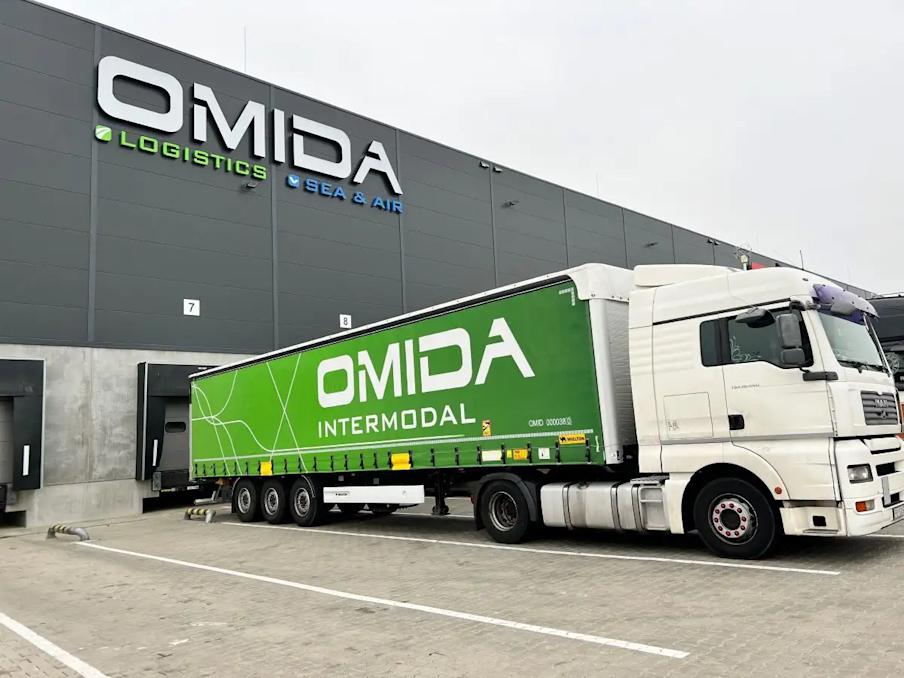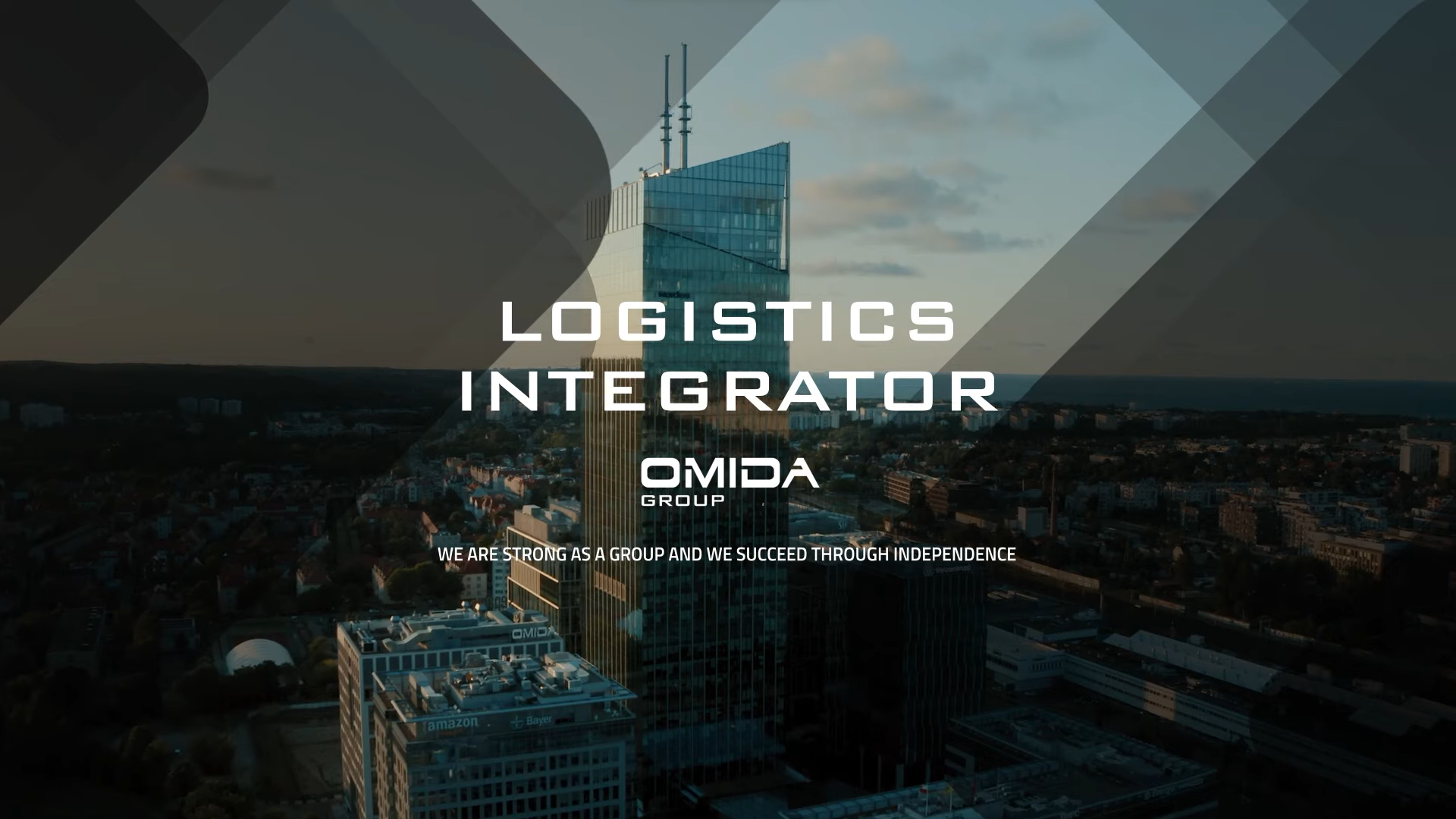The cold chain plays a key role in ensuring the safety and quality of food products, especially those that require temperature maintenance. It is defined as a comprehensive system that includes the processes, technologies and activities involved in storing, transporting and distributing foodstuffs under controlled refrigeration conditions.
In this article, we will look at issues such as:
- the definition of the cold chain and how it is managed in practice,
- elements of the cold chain,
- the requirements for transporting fresh products.
What is a cold chain?
The cold chain is a comprehensive system of transport by road, sea and air, including storage and distribution of products that need to be maintained at the right temperature to maintain freshness and quality. It mainly involves food products such as meat, fish, fruits, vegetables, dairy and frozen products. The cold chain aims to minimize the risk of spoilage of products during transport and storage, thus ensuring food safety for consumers.
The cold chain is a logistics system that ensures proper storage and transport conditions for food products with limited shelf life. It is indispensable for foods that need to be maintained at certain temperatures to retain their organoleptic properties and not lose their nutritional value. It works on the basis of a strictly controlled process that involves all stages of international transport and domestic transport, from the manufacturer to storage to the delivery of goods to the customer.
Elements of the cold chain
The important elements of the cold chain are:
- Producer: The food manufacturer is responsible for ensuring that its products are properly stored and transported before they reach the carrier.
- Carrier: Carriers and transport companies, like Omida VLS, specialize in transporting food and have the infrastructure and vehicles in place to maintain the proper temperature.
- Warehouse: Refrigerated warehouses are essential for storing food under controlled temperature conditions, especially for longer shipments.
- Temperature monitoring: During transport, it is important to monitor the temperature to make sure it is maintained within the proper range. Advanced monitoring systems are used for this purpose.
What can happen if the continuity of the cold chain is broken?
A break in the continuity of the cold chain can lead to a variety of adverse consequences, especially in the case of food that requires temperature conditions to be maintained. Here are some situations that can occur if the cold chain is interrupted:
1. Food spoilage and deterioration: If the temperature of food is raised uncontrollably, it can lead to rapid spoilage. Microorganisms can multiply in warm conditions, increasing the risk of infection and disease. Food deterioration can result in changes in taste, smell, texture and appearance.
2. Consumer health risks: Consumption of spoiled food can lead to food poisoning. Microorganisms such as bacteria, viruses or molds that can grow in improperly stored food can be harmful to health. This can lead to symptoms such as diarrhea, vomiting, abdominal pain and fever.
3. Food waste: Breaking the cold chain can lead to food waste. Food products that do not meet temperature requirements may not be fit for consumption and will have to be discarded. This leads to economic losses for both producers and consumers.
4. Financial losses for businesses: A break in the cold chain can lead to significant financial losses for food-related businesses. Improperly stored food may no longer be saleable, leading to loss of revenue and negative effects on the company's reputation.
Therefore, it is important to maintain the continuity of the cold chain and ensure proper food storage and transport conditions. Regular temperature monitoring, staff training and the use of proper hygiene procedures and standards are key to preventing breaks in the cold chain and maintaining food quality and safety.
Requirements for transport of fresh produce
Transporting fresh produce, such as fruits, vegetables and meat, requires certain requirements. Here are some key factors:
- Temperature: The product must be transported at the right temperature to prevent spoilage and loss of quality. There are different temperature recommendations for different types of food.
- Hygiene: Ensuring proper hygiene standards during transport is critical to avoid food contamination and potential health risks.
- Delivery time: For fresh produce, delivery time is important. The shorter the time, the greater the chance of preserving the freshness of the product.
Why is cold chain management important?
Cold chain management is extremely important because of the various risks that can affect the quality and safety of food products. Inadequate temperatures, vehicle breakdowns, improper storage or improper transport procedures can cause products to spoil, leading to financial losses and a negative impact on a company's reputation. Therefore, proper cold chain management is key to maintaining product quality and customer satisfaction.
Cold chain management
Effective cold chain management is key to maintaining the quality of food products. It involves planning, monitoring and coordinating all stages of food transport and storage. The implementation of appropriate temperature monitoring systems, staff training and cooperation between producers, transporters and warehouses is essential for effective cold chain management.
Definition of the cold chain
The cold chain consists of several main components that must be properly organized and managed to ensure that the required temperature and quality of products are maintained. Here are the main components of the cold chain:
Starting point: the food manufacturer
The beginning of the cold chain is the food manufacturer, who is responsible for preparing and packaging products for transport. At this stage, it is important to ensure that the products are stored and handled properly to minimize the risk of spoilage.
Transport
The next element is the transport of products from the manufacturer to the point of destination. For the cold chain, it is necessary to use special refrigerated vehicles that are equipped with temperature control systems. This ensures that proper conditions are maintained during transport.
Storage
Once the products reach their destination, they are stored in appropriate warehouses or distribution centers. These locations must be equipped with special refrigeration equipment, such as chambers and refrigerators, to maintain appropriate temperatures.
Distribution
The products are then prepared for distribution. They may be sorted, packaged and labeled according to customer orders. At this stage, it is important that the entire process takes place under controlled refrigeration conditions to ensure the quality and freshness of the products.
Endpoint: Consumer
The final part of the cold chain is the delivery of products to the consumer. In this case, the cold chain ends when the consumer receives fresh and quality food products.
Managing the cold chain
In order to effectively manage the cold chain, it is essential to use the right strategies and tools. Here are some key aspects of cold chain management:
Technology and monitoring
The use of advanced technology, such as temperature sensors, data loggers and monitoring systems, enables continuous monitoring of transport and storage conditions. With these tools, you can react quickly to potential failures and ensure that temperatures are maintained within appropriate ranges.
Planning routes and schedules
Proper planning of transport routes and schedules allows you to optimize the logistics process. This ensures efficiency and minimizes transport time, which is key to maintaining product quality and freshness.
Securing the cargo
To prevent damage and shock during transport, cargo should be properly secured. This includes the use of special packaging and fastenings that minimize the risk of damage to products.
Proper transport and storage conditions
Ensuring proper transport and storage conditions, such as temperature, humidity and lighting, is critical. Proper regulation of these factors minimizes the risk of spoilage and maintains product quality.
What does control look like in the food cold chain?
Control in the food cold chain plays a key role in ensuring that proper temperature conditions and product quality are maintained. Here are some aspects of cold chain control:
- Temperature monitoring: One of the most important elements of control is the regular monitoring of temperature at various stages of the cold chain. This uses special equipment such as thermometers, temperature loggers or online monitoring systems. Temperature should be checked at all key points, such as refrigerated warehouses, warehouses, transport vehicles and stores.
- Verification of documentation: An important aspect of the inspection is the verification of documentation related to the cold chain. This includes verifying that all required temperature, storage time and transport data have been properly recorded and documented. This makes it possible to track food history and identify any deviations.
- Staff training: Cold chain control requires adequate training for personnel responsible for storing, transporting and handling food. Employees should be aware of procedures related to maintaining proper temperatures, hygiene and safety. Training should include, among other things, temperature monitoring techniques, emergency procedures and hygiene practices.
- Audits and inspections: Regular audits and inspections are important to verify that all cold chain procedures are being followed. They can be conducted both internally, by company personnel, and externally, by independent certification bodies. Audits assess the effectiveness of temperature monitoring systems, hygiene practices, compliance with sanitation requirements and other aspects of the cold chain.
- Responding to deviations: When deviations from required temperature parameters or other irregularities in the cold chain are detected, appropriate corrective action must be taken immediately. This may include, but is not limited to, repairing defects in refrigeration equipment, moving products to another cold storage facility, or rejecting food if it is unfit for consumption.
Control in the food cold chain is essential to ensure that proper temperature conditions and product quality are maintained. Regular monitoring, documentation, staff training, audits and response to deviations are key to effective control and prevention of food storage and transport problems.
Transport of fresh produce - what does it look like in practice?
In practice, transport of fresh produce requires precise planning and execution. Here are some key factors that affect the transport of fresh produce:
Choosing the right vehicle
Depending on the type of products and temperature requirements, it is necessary to choose the right refrigerated vehicle. There are different types of vehicles, such as refrigerators, coolers, and isothermal containers, which are tailored to specific needs.
Maintaining the right temperature
It is important to maintain a stable temperature during transport. This requires not only the right vehicle equipment, but also monitoring the temperature on a regular basis and responding to any deviations.
Monitoring and control
During the transport of fresh products, it is important to constantly monitor and control conditions. Data loggers and temperature sensors make it possible to monitor temperatures in real time, as well as collect data for later analysis and process optimization.
Staff training
Proper training of personnel responsible for transporting fresh produce is crucial for effective cold chain management. Employees should be aware of procedures and adhere to strict hygiene and food safety standards.
Emergency situations and solutions
Despite all precautions, emergencies such as vehicle breakdowns and temperature disruptions can occur. In such cases, it is important to react quickly and take appropriate corrective action to minimize the impact on product quality
Phases of the refrigerated transport sequence:
- Post-production pre-cooling: This process takes place at the manufacturer, on farms and in production facilities. In this stage, food is cooled just after production, harvesting or slaughtering. Special refrigeration equipment, such as cold rooms, is used to reduce the temperature of the products to an appropriate level.
- Refrigeration in cold rooms and plant warehouses: After pre-cooling, food is stored in cold rooms and plant warehouses. These places are specially designed and equipped with refrigeration systems that maintain the right temperature, preventing the growth of microorganisms and loss of product quality. The storage temperature depends on the type of food and is strictly controlled.
- Transport of chilled goods: After proper storage at the production facility, food is transported to stores, wholesalers and other outlets. This stage uses special refrigerated vehicles and containers to maintain a stable temperature throughout the transport route. The temperature is also monitored during transport to ensure that it is kept within the proper range.
- Food display: Once delivered to stores, food is displayed on shelves or sales counters. During this time, too, it is necessary to maintain proper refrigeration conditions to prevent bacterial growth and loss of product quality. Stores have refrigerated display cases and shelves to keep food at the right temperature.
- Consumption: The final stage is the consumption of food by customers. At this point, it is important for buyers to properly store products at home, according to the manufacturer's recommendations. It is especially important to store products at refrigerated temperatures to prevent spoilage and preserve freshness.
The food cold chain involves a series of stages in which food is stored and transported under controlled temperature conditions. This helps ensure that the quality and freshness of products is maintained from the producer to the consumer.
Summary
In today's article, we discussed the definition and management of the cold chain in the context of transporting fresh products. We pointed out the important elements of this process, as well as introduced the Omida VLS shipping company as a professional carrier that meets all the requirements for food transport. If you need a reliable and safe carrier for your food products, contact Omida VLS now.
The cold chain plays a key role in transporting fresh produce and ensuring food safety. Proper management of this chain is critical to maintaining product quality and freshness, as well as customer satisfaction. Omida VLS specializes in cold chain management and offers professional transport services, ensuring the safe and reliable transport of food products.
By inference, the cold chain plays a key role in the transport of food products, ensuring freshness and quality from the producer to the consumer. Professional management of temperature, hygiene and safety are essential in this process. If you are looking for a reliable logistics operator to provide professional cold chain transport services, contact Omida VLS today. We provide comprehensive logistics solutions that will meet your needs.
Contact Omida VLS today and trust the professionals in food transport. We are ready to provide you with a safe and efficient cold chain for your food products.



